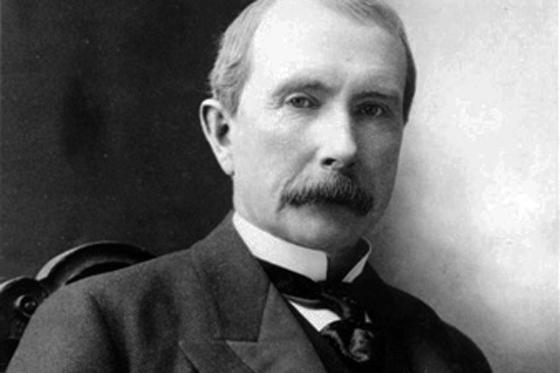How to correctly use the attribute rel = "nofollow" - SEO secrets
Secrets of site optimization are not onlyin their progress on key requests, the concern about usability and traffic increase, but also in the correct use of html-code. Correct application of tags and their attributes often helps to avoid multi-day work. There are popular and effective techniques. Probably, in SEO optimization, you can not separate the relnofollow attributes and the noindex tag from each other. Therefore, this article will discuss both of them, as well as what they are for, whether they should be placed side by side and when they should be used, and when this should not be done.

Indexing pages and their weight
One of the most important parameters of getting a site intoTop 10 search engines - the weight of its pages. It is they who get into the first issue of Yandex and Google, and behind them the Internet portals. The weight of each of them increases due to references - both external and internal. Understand how the process of distributing this parameter between the pages of your site and Internet projects, links that are placed on your own resource, is important for every web master.
Where does weight go?
Let's consider an elementary example. Suppose that the main text contains two links leading to other publications. Initially, assign each page a weight equal to 1. When indexing, the search robot will take into account both links. In this case, the weight of the main page will decrease by a factor equal to 0.85. It is easy to calculate how much the publications referred to will receive: 0.85 / 2 = 0.425.
This algorithm is not accurate and officialcalculation of search engines. It is laid out for the reader in general terms to understand the distribution of such a parameter as the weight of the page. When its value is clear, it's easier to perceive information about what the rel nofollow attribute is.

Hide links from search engines
Of course, any site is created to getany profit from it. And the weight of each page is appreciated by the webmaster. But you can not not place external links in your publications. There are reasons for this, and here are some of them:
- buying and selling links brings profit;
- quoting on authoritative resources adds weight to the site;
- the attendance of the Internet project increases.
There is an opinion that the attribute of the a-rel tagnofollow will help to hide the anchor from the search robots and at the same time the weight of the page will be preserved. But this statement is possible only if the code is written correctly. The exact spelling of this attribute looks like this:
a href = "URL" rel = "nofollow"> anchor.
Correct linking only gives the site weight and raises its ranking. Needless to say, for internal links, there is no need to use a href rel nofollow.

Example of use
The explanation in general does not always opena complete picture of the importance of the use of certain tags and their attributes. Hide the link, do not give the weight of the page of your site to another. What is it? Just greed? No, this is far from the case. For example, many sites have social network buttons. Agree that their trust is so great. Codes of social buttons with preserving the weight of their own pages are prescribed using the attributes target blank, rel nofollow. The first of them after the click will lead the visitor to third-party Internet resources, opening one more browser tab. The second one will not allow you to reduce the weight of the page. For example, for a social network button on Twitter, it would look like this:
a rel = ”nofollow” target = ”_ blank” href = ”URL / home /.
It is necessary to make a reservation about the validity of the code - complianceall technical requirements of html markup. The tag external external nofollow not only replaces the target_blank attribute, but is also better perceived by search engine robots.

A rel href nofollow, or When it is still needed
Not only social networks do not need a weight that is scarce for a young Internet project. As a rule, the attribute is used for:
- hide from the search engines links to "bad" or non-thematic sites;
- in order to hide a large number of addresses to third-party resources;
- hide links in case the webmaster trades with them;
- non-transfer of weight to megapopular portals, such as Yandex or Google;
- hide links in the comments.
Nofollow saves websites, and especially blogs from spam. Unverified links closed by such an attribute will appear less and less in comments.

Noindex, and why is it worth talking about
Preventing indexing by search engines canspecify not only external and internal links, but also individual elements of texts, as well as pages entirely. For this, webmasters use the noindex tag. He hides only the texts. Not applicable to pictures and photos. Links that successfully hide rel nofollow cannot be hidden from search engines by noindex. The robot will not see the anchor, but it will index the addresses. Noindex is usually used to hide parts of content:
- with obscene expressions;
- with non-unique text;
- in sidebars and mailings.
The tag is definitely to be used. But it does not work on every engine. The fact is that noindex is not valid, that is, it does not meet the standards. That is why one of the most popular blogging platforms WordPress "throws out" a tag from its code. The secret of validity is the use of multiple characters. <! - / noindex ->. By writing the code in this form, you can be sure that the blog pages on WordPress Yandex will not index.

Sharing
Should I prescribe both the tag and the attribute in the codepages? Nothing prevents the use of noindex and a rel nofollow in a pair. The tag does not interfere with the attribute, and vice versa. They are placed next to each other because search engines see the site code differently. For example, when using both the tag and the attribute, the webmaster can be sure that the anchor of the Yandex robot does not recognize, nor will the link itself be seen. Google will see the text, but the weight will not transfer to third-party pages of other sites.
Especially for beginners
Website Optimization - New in the Labor Market andinteresting job. The lack of systematically planned information resources for beginners greatly complicates their activities. And naturally, young webmasters make mistakes. Someone fills the content with an insane amount of links, someone leaves the page without one at all. The same picture is in the case of the arrangement of the noindex tag and the rel nofollow attribute.
The desire to bring the site to the top of search enginesis the cause of the critical error. The fact is that beginners often close external links with both a tag and an attribute. This to some extent really saves the weight of each page of the site. But it is also true that the same external links increase trust from the search engines. Weight loss can be compensated by advancing low and medium frequency inquiries.
Any optimizer should remember that anyinformation will be perceived by readers with great confidence in the case of the possibility to follow the link to its source. Surely the webmasters themselves are unlikely to adopt a book or brochure that does not contain a list of used literature.
More and more Internet users orientedon authoritative sources. And if the young site does not refer to their opinion, then it will be much more difficult for him to keep readers, attract subscribers. Of course, this will negatively affect the optimization of the resource by a behavioral factor. So is it worth while blindly using rel nofollow attributes?
A good webmaster takes care of his reader. He remembers that one of the foundations of the Internet is links to reputable resources that provide accurate information. Sites made for people, search engines "love." And the weight of the pages is not the only parameter by which pages with content get into the TOP. According to 800 parameters, Yandex evaluates Internet projects.
And in the end, page weight mattersOnly for publications that have received it from links from third-party sites. As experience shows, donors, leaving this ranking parameter to themselves, do not rise above it in the "eyes" of search engines.
</ p>>







